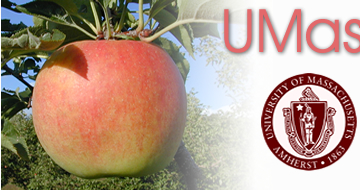

| FRUIT ADVISOR HOME | CONTACT | ABOUT | ||
 |
 |
|
| Consumer Evaluation of New, Antique, and Little Known Apple Varieties | ||
|
|
||
In the past, private breeders, University breeding programs, and nurseries received compensation for patented varieties by receiving royalties from the sale of trees. Because apple breeding programs are very expensive to operate, the royalties received were insufficient to cover the cost to maintain a breeding program. Undoubtedly, new varieties will be released in the future in an entirely different way. Tree sales, production, and marketing of the best and most promising varieties will be under the strict control of patent holders. Trees will be sold only to large growers willing to sign agreements, and they will probably be restricted to growers in large apple-producing states. Most likely, growers in Massachusetts will not be able to plant these new varieties, because they are generally not large apple producers and they are located far away from sales and packaging facilities. Under this scenario, it appears that apple growers in Massachusetts may be restricted to planting old established varieties or newer but available varieties. Examples of the restricted varieties are Ambrosia, Pinata, MN 1914, and NY 674, varieties from Canada, Germany, Minnesota, and New York, respectively. Consequently, Massachusetts growers will not be able to grow and sell the best varieties that will be introduced. These are typically the varieties most in demand and also the ones for which growers receive the highest prices. The majority of apples sold in Massachusetts are in grocery stores and similar outlets. The variety selection includes many old standard varieties plus a few new varieties such as Jazz, Honeycrisp, Cameo, and the previously mentioned Ambrosia and Pinata. Rarely are locally produced apples sold in such stores, because there are few wholesale growers now, supermarkets are looking for one-source suppliers, and because of the low profit margins, growers look for other sales outlets. Shelf space is limited, thus there are just a few varieties available. The quality of apples found in large grocery stores is frequently fair at best, due to a number of factors, including long storage, improper handling, the long period of time in transit, and preharvest and postharvest treatments that may suppress ripening and taste development. It is little wonder that the per-capita consumption of apples in the U.S. has remained flat for many years (Desmond O’Rourk, Belrose Inc., Pullman, WA). |
||
| ©Copyright 2008 University of Massachusetts Amherst. Site policies. Produced and maintained by the UMass Fruit Program. |